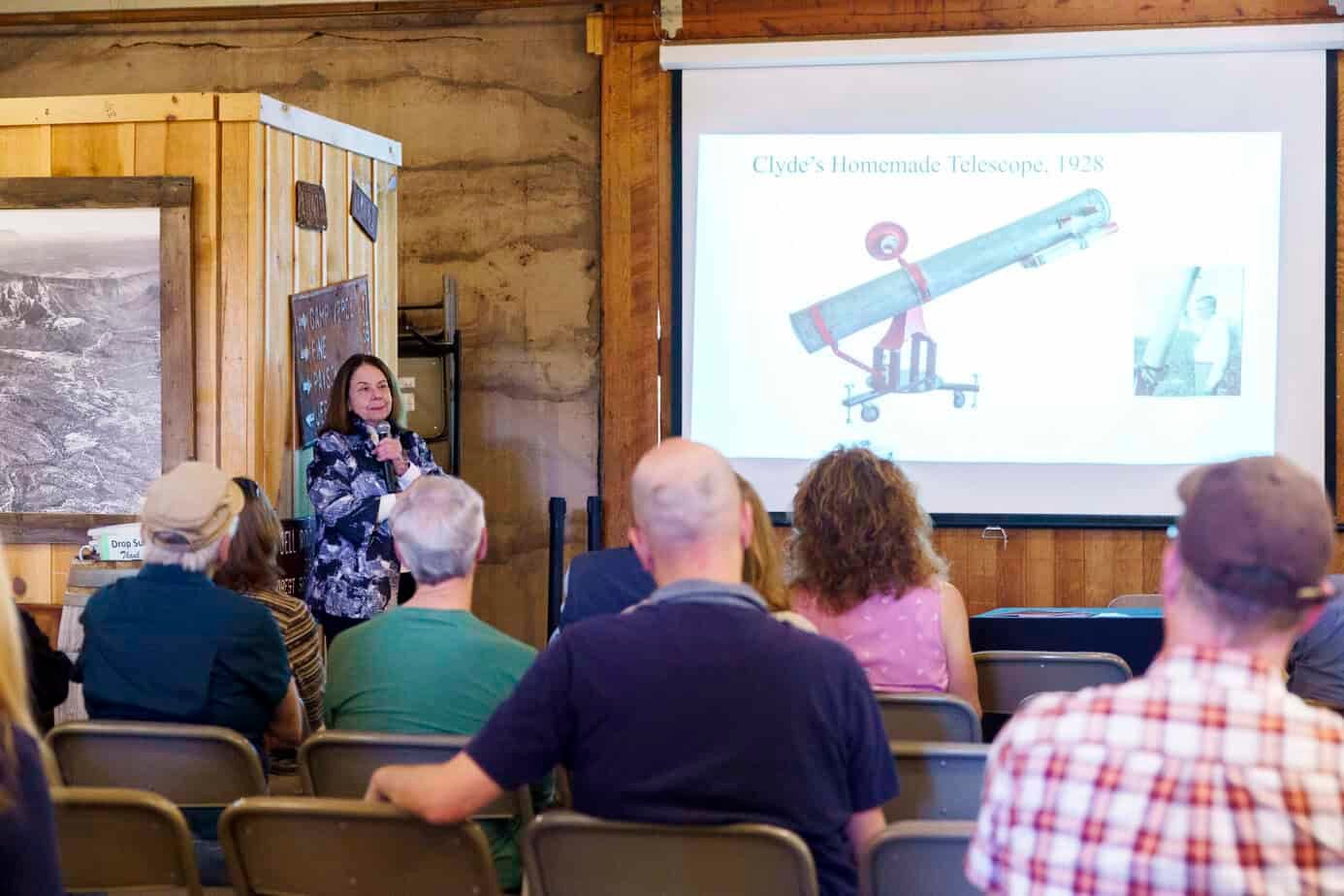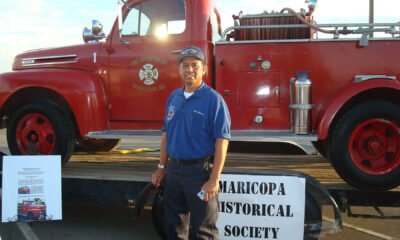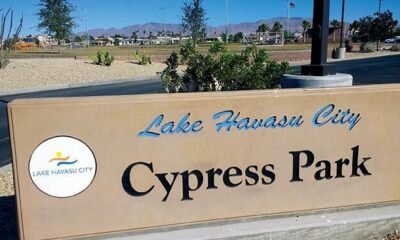Diane Phelps Budden
From Kansas Fields to Cosmic Frontiers: A Journey to Pluto and Beyond

The Sedona Heritage Museum recently featured a fascinating discussion with local author Diane Phelps Budden and historian Kevin Schindler. Their talk, titled “Tiny Pluto Has a Big Heart,” was part of the ongoing Sedona Stories speaker series.
Schindler highlighted the rich scientific legacy of Arizona, commending the Lowell Observatory’s inclusion in Time Magazine’s list of 100 Exciting Destinations. He shared his enthusiasm for collaborating with Budden, emphasizing the human elements behind scientific discoveries. “The story of Pluto embodies human drive and persistence,” Schindler explained. “It showcases how creativity thrives in the face of challenges.”
During the event, Budden delved into the extraordinary life of Clyde W. Tombaugh, the astronomer responsible for Pluto’s discovery. Schindler provided insights into Pluto’s observational history, touching on its reclassification as a dwarf planet by the International Astronomical Union in 2006 and the NASA New Horizons flyby in 2015. They also honored the recent renaming of asteroid 1999 (AQ23) to 29722 Chrisgraham, in recognition of Christopher Fox Graham, the Managing Editor of Sedona Red Rock News.
Tombaugh, born on February 4, 1906, in Illinois, demonstrated an early fascination with astronomy. He recounted in his book “Out of the Darkness: The Planet Pluto” his childhood inquiries about the geography of other planets. Driven by curiosity, he constructed a telescope from available materials, including a cream separator and parts from a vintage car. After relocating to Kansas, financial difficulties forced him to leave school temporarily before graduation.
Reflecting on an agricultural disaster in 1928 that threatened his family’s livelihood, Tombaugh expressed doubt about farming as a future and aspired to attend college. His interest in astronomy eventually led him to send sketches to Lowell Observatory, which was then recruiting for a planetary search program. This correspondence culminated in an invitation to join the team in Flagstaff in January 1929.
Tombaugh’s groundbreaking discovery of Pluto occurred on February 18, 1930, when he identified a moving speck of light in the night sky. The announcement in March captivated global audiences, with the Associated Press recognizing it as one of the year’s major news stories.
Budden conveyed her admiration for Tombaugh, celebrating his resilience as an inspiring figure for children. To share his story, she read from her latest book, “Needle in a Haystack: How Clyde W. Tombaugh Found an Awesome New World,” to a fourth-grade class at West Sedona School.
Throughout his life, Tombaugh constructed over 30 telescopes, embodying the Kansas state motto “Ad Astra Per Aspera” — “Through hardship to the stars.” Schindler’s insights from the event will be featured in an upcoming issue of the NEWS.
The Sedona Stories speaker series will conclude its spring season with a presentation by Neil Weintraub, a retired archaeologist from the Kaibab National Forest. His lecture on the Sedona archaeological site “Tim’s Cave” is scheduled for Thursday, April 10, at 10 a.m.


















